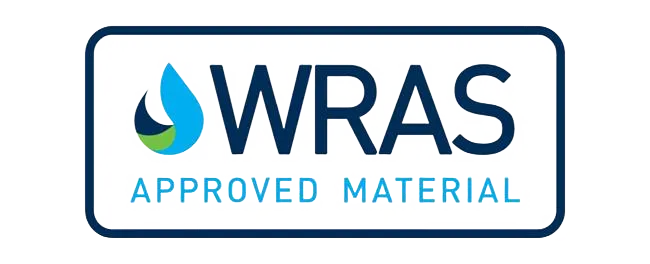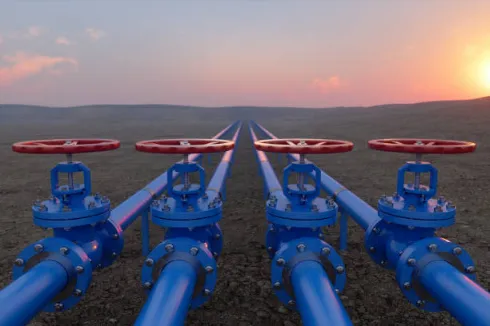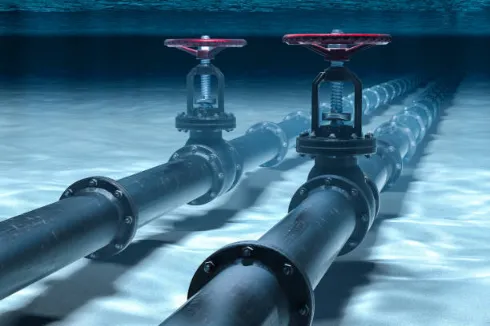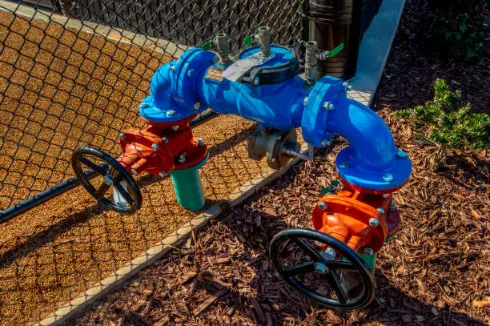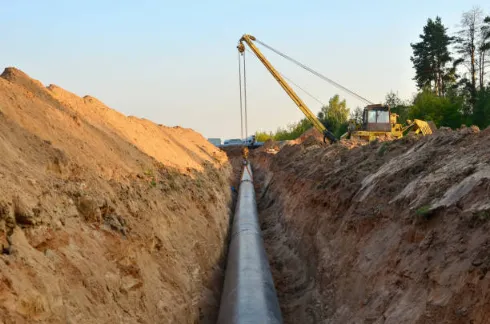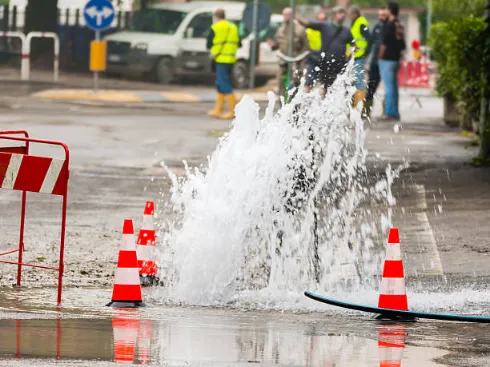Pumps are essential in water systems, HVAC, and fire protection networks. They often run under pressure. They also face vibration, changing temperatures, and long hours of operation. Over time, these stresses can shorten their working life.
A stainless steel compensator helps fix these issues. Placed at the inlet and outlet of pumps, it cuts vibration, absorbs pipeline noise, and protects the equipment. In this article, we will show how compensators add years to pump life, where they are used, and what to check when choosing them.
What Are Stainless Steel Compensators?
Definition and Core Function
A stainless steel compensator is a joint with flexible bellows. It absorbs vibration and thermal expansion. Unlike stiff pipe links, these devices allow controlled movement. This prevents pressure from passing straight into the pump body.
Why Stainless Steel Is Preferred
Stainless steel is strong and reliable. It resists rust, handles high pressure, and survives extreme heat or cold. When compared with rubber or carbon steel joints, stainless steel compensators last longer. They also work better in fire protection and industrial systems.
Product Basics
A typical stainless steel compensator includes lugs, a flange, bellows, a draft tube, pull rods, and nuts. It can handle PN10, PN16, or PN25 pressure. It works in a wide range, from -196°C to 450°C, and allows angular movement of 5–30 degrees. Standards such as EN10088 and EN1092 cover its material and flange drilling. These features make it useful in water, air conditioning, fire, and steam piping.
Common Pump Problems Without Compensators
Vibration and Misalignment Issues
When pumps run, they shake. If this vibration passes straight into the pipe, it causes misalignment. Bearings and seals wear out faster. Over years, cracks may even appear in the pump housing.
Thermal Expansion Stress
Pipes expand when hot and shrink when cold. Without compensators, these movements push stress onto pumps. In big HVAC systems, expansion and contraction cycles happen every day. This reduces pump reliability step by step.
Leakage and Seal Failures
Strong vibration and constant stress damage seals. Once seals fail, pumps start leaking. Leaks waste water and can also harm nearby equipment. They also increase downtime and repair costs.
How Stainless Steel Compensators Protect Pumps
Absorbing Vibrations and Noise
The bellows act like cushions. They take in the shaking from pumps and stop it from spreading across the pipes. This also lowers noise in machine rooms, making the space safer and more comfortable.
Compensating for Thermal Movements
Compensators can move slightly in different directions. They adjust for pipe expansion and contraction. With this controlled movement, pumps are safe from extra pressure.
Extending Seal and Bearing Life
Less vibration and lower stress mean seals and bearings stay strong for longer. Pumps work more smoothly. Breakdowns happen less often. Over the years, this means lower repair bills and a longer pump life.
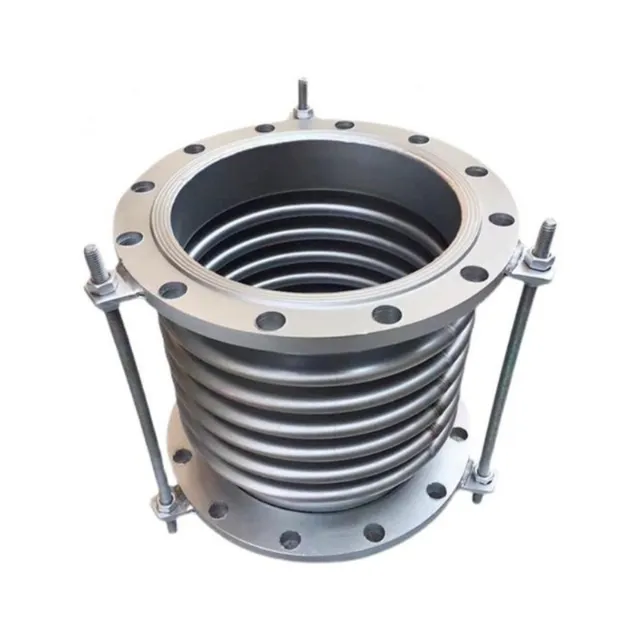
Key Factors When Selecting Stainless Steel Compensators
Material and Grade Selection
Not all stainless steel grades are the same. 304 and 316 have different resistance levels. For general water systems, 304 is common. For harsh jobs like seawater or chemical plants, 316 is better. This matches pipe choices: ductile iron resists corrosion better than plain steel.
Design and Size Considerations
The compensator must fit the diameter and pressure of the system. Small joints can fail early. Oversized ones may not control movement well. Always check working pressure, PN10, PN16, or PN25, against the pipeline rating.
Installation and Maintenance Tips
Correct installation is vital. Compensators are usually near pump inlets and outlets. Pull rods must be tightened evenly to avoid imbalance. Regular checks catch wear or rust early. Just like aging pipelines need inspection to avoid failure, compensators also need scheduled reviews.
Applications Across Industries
Municipal Water and Wastewater Systems
Cities depend on pumps for clean water and sewage handling. In these systems, compensators protect pumps from vibration and pipe shifts. Their ability to handle large diameters and resist corrosion makes them very useful.
Power Plants and Industrial Facilities
Industrial networks often run under high temperature and pressure. Steam pipes in power plants expand and contract daily. Without compensators, pumps in these plants suffer from heavy stress. Stainless steel compensators provide both strength and heat tolerance.
Marine and Desalination Projects
Seawater is very corrosive. In desalination plants, stainless steel compensators are needed because they resist salt attack. For pumps near the ocean, compensators block both corrosion and vibration, giving long term stable service.
Link Between Pump Longevity and Pipeline Materials
The pipe material itself affects pump health. Steel pipes are strong and common in oil, gas, and pressure systems. Ductile iron pipes last more than 100 years, with high resistance to corrosion, making them good for water and wastewater. But aging pipes corrode and leak. This makes pumps work harder, adding stress.
By combining the right pipe material with a high quality compensator, projects achieve balance. The system gains strength, corrosion resistance, and reduced pump stress. As shown by Conflex Joints, this mix of components is key for modern infrastructure.
Why Work with Conflex Joints
Conflex Joints produces many kinds of pipeline connectors, including stainless steel compensators. Their solutions meet EN and ANSI standards and are used in water, HVAC, and fire projects. You can learn about them to see their global work.
For contractors or engineers who need advice, it’s easy to ask for details. Good support helps select the right compensator and lowers project risks.
Conclusion: Investing in Pump Longevity
Pumps are valuable assets in every system. They run hard each day, and failures can stop operations. Stainless steel compensators are a smart way to extend pump service life. They cut vibration, take in stress, and protect seals.
From water supply to industrial plants, these joints play a quiet but vital role. By choosing the right product and installing it correctly, teams save costs and boost reliability. For upgrades or new projects, Qopqoq bo'g'inlari provides solutions that offer both durability and peace of mind.
FAQ
Q1: What is the main job of a stainless steel compensator?
It cuts vibration, absorbs noise, and adjusts for pipe movement. This protects pumps and extends their life.
Q2: Can stainless steel compensators handle very high or low temperatures?
Yes. They can work from -196°C up to 450°C, making them fit for cryogenic and high heat jobs.
Q3: How often should compensators be checked?
Every 6 to 12 months is best. Like pipes, early checks catch wear or rust and stop costly problems.
Q4: Are compensators only for water systems?
No. They are also used in fire protection, air conditioning, steam, and marine piping.
Q5: Why pick stainless steel instead of rubber compensators?
Rubber joints are cheaper but wear out faster. Stainless steel is tougher, resists pressure, and lasts much longer.




